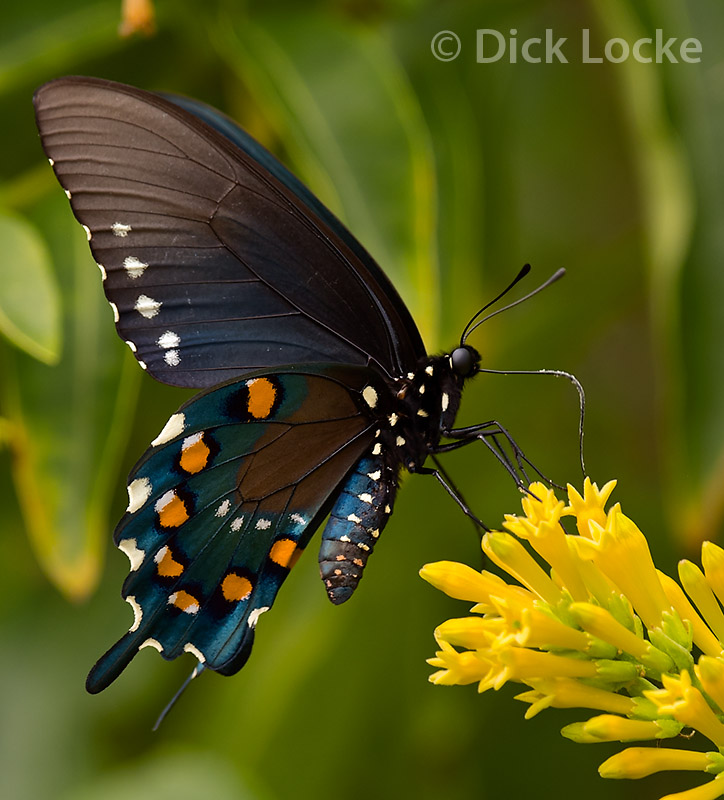
Pipevine Swallowtail (Blue Swallowtail) Butterfly on Cestrum

Pipevine Swallowtail, Battus philenor. This shot clearly shows it sipping nectar with the convenient built-in straw. This is a shot with the big lens; 1/1250, f4, ISO 200 and the Nikon D810A camera. The BugGuide.net link is here. There "Blue Swallowtail" is indicated as a common name.
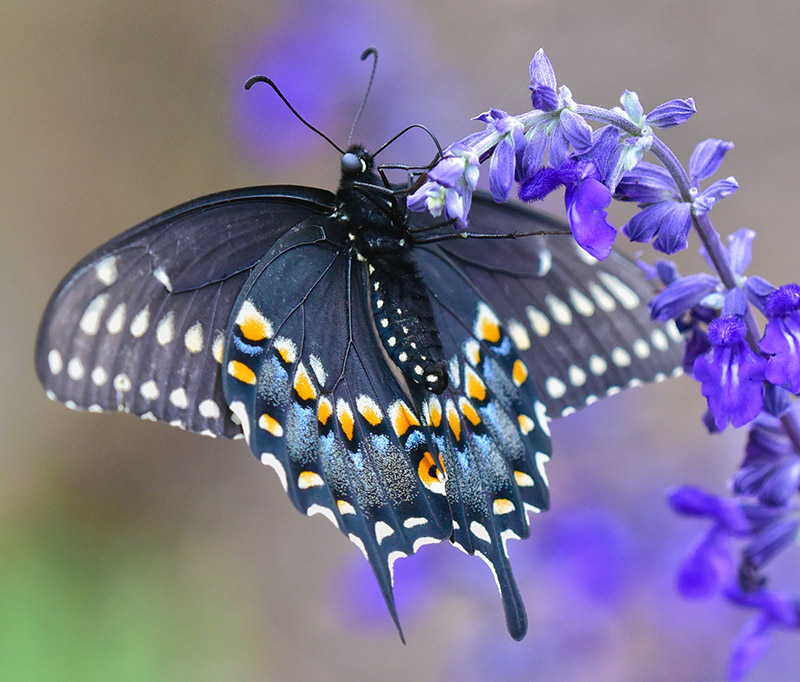
This pretty boy is enjoying the Salvia 'Indigo Spires' we just planted. Many thanks to Gil who identified this as a male Black Swallowtail. I thought it was a Pipevine Swallowtail, but he writes: This is a Black Swallowtail (Papilio politeness), male. It does strongly resemble a Pipevine Swallowtail, but if you compare your photos, you can seen differences. The tell-tale fieldmark is on the lower hindwing. Do you see the row of orange and yellow spots that looks sort of like a row of teeth? Just above the third one from the left is a pale, all yellow spot. This spot is diagnostic of Black Swallowtail and the easiest way to distinguish it from the other species. Spring 2015 from near The Woodlands, TX. Nikon D750 & 200mm macro lens.

Backyard, August 27, 2016. This guy was huge and certainly earns it's name. Here's the bugguide link. "Often cited as the largest butterfly in the United States and Canada. However, the Two-tailed Swallowtail (Papilio multicaudata) averages larger." Details: 1/1000s at f9, ISO 1000, Nikon D750 and Nikon 200mm macro lens.
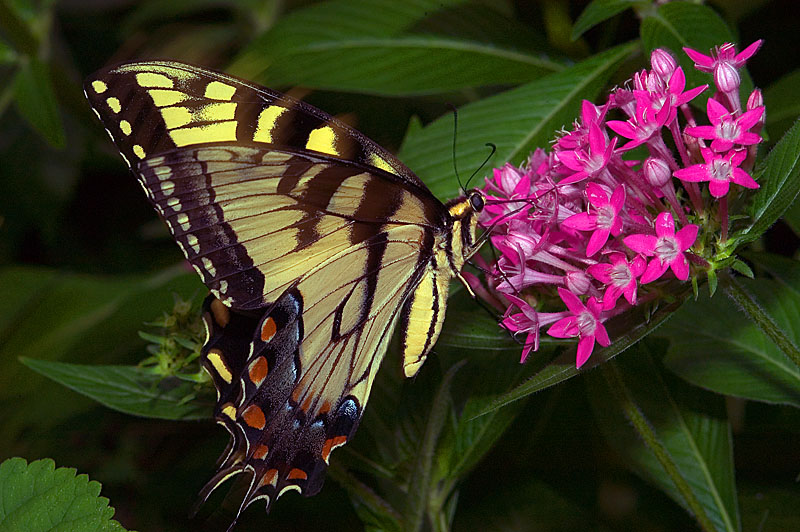
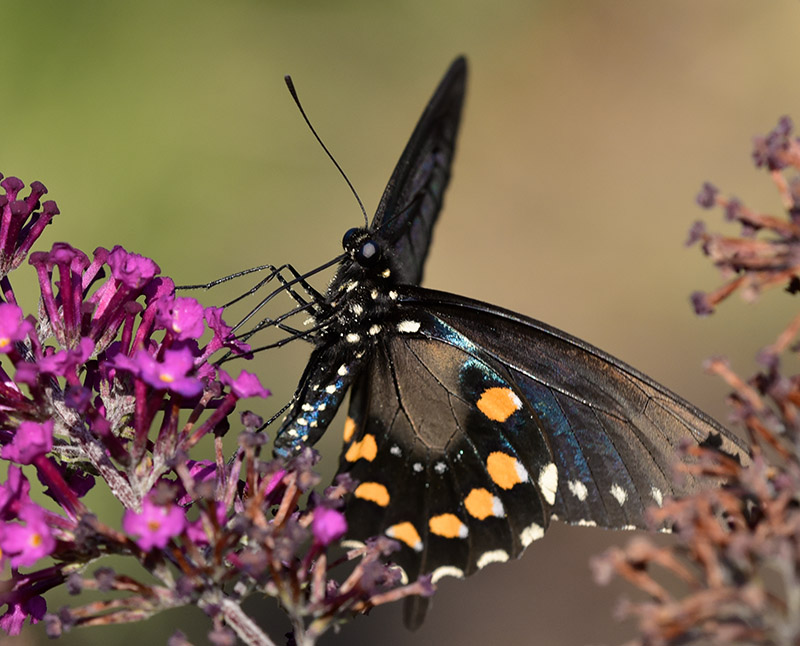
Spring 2015 from near The Woodlands, TX. Nikon D750 & 200mm macro lens. See another specimen and Gil's comments below.
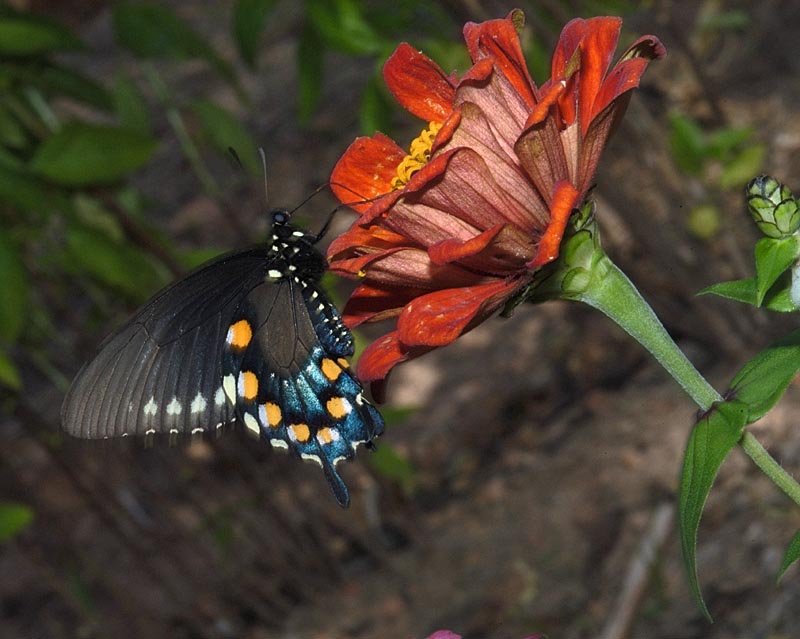
I've been incorrectly calling it a Blue Swallowtail it seems. Gil provides the following information: Females tend to have more pale yellow spots near the wing margins, as seen in your photos, but males tend to have more blue in them. I think the blue is a product of refraction, not pigment, so your flash could turn a black color bluer. I suspect this is (or these are) female(s). The name “Pipevine” comes from its larval food plant. I have not heard the name “Blue Swallowtail” attached to this species, but that may well be the local term. AKA Pipe-vine Swallowtail. October 2003, Wimberley, TX.
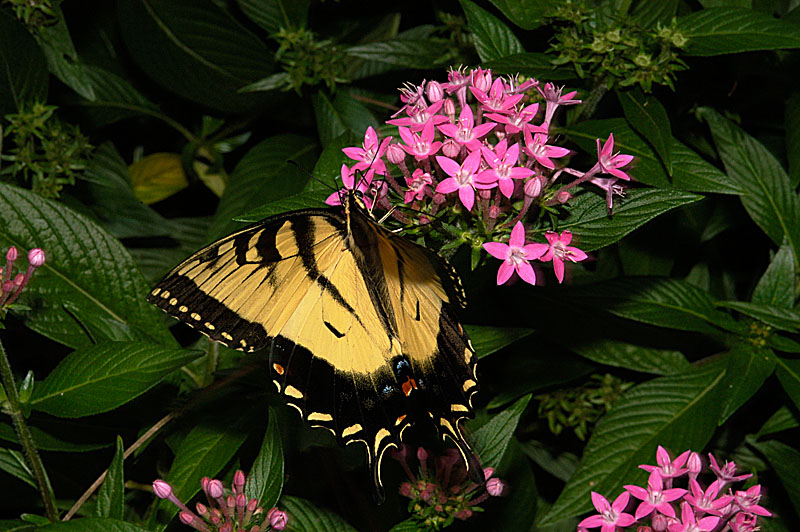
From The Woodlands, TX. Gil says: It is an apparent male, which has fewer blue spots on the hindwing than does the female.

Nikon DSLR & 105mm macro lens, flash, f20.

I shot 04/08 this while trying to catch some pictures of waxwings in the front yard pine trees
Hope you enjoyed looking at the butterfly pictures! These are a challenge to shoot as they seldom stay in one place for long.
(More) Butterfly Pictures Images (Monarch, Gulf Fritillary, Swallowtail, Wood Nymph)
|
|
| |
Copyright © Dick Locke. All Rights Reserved.
Contact and Image Use Information